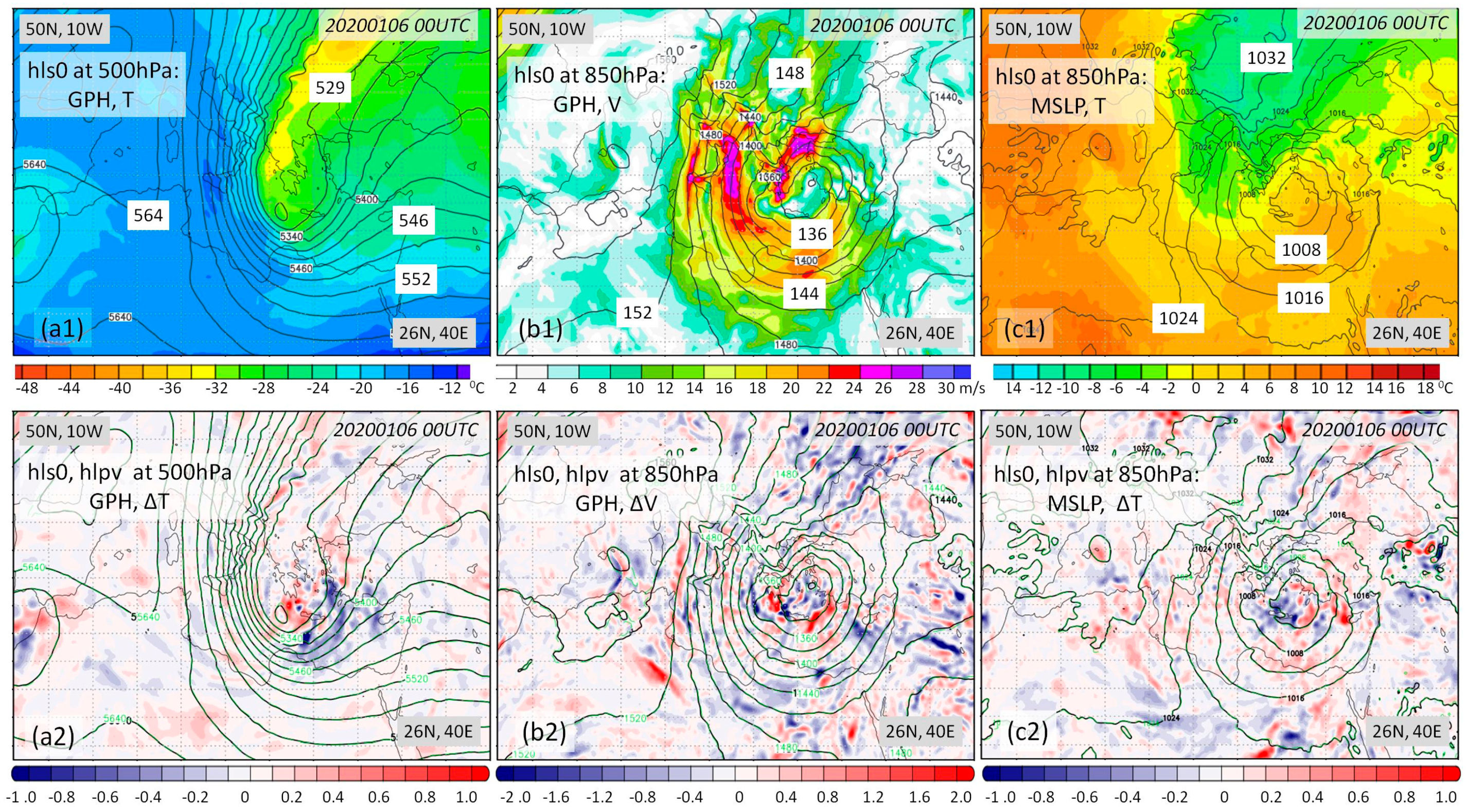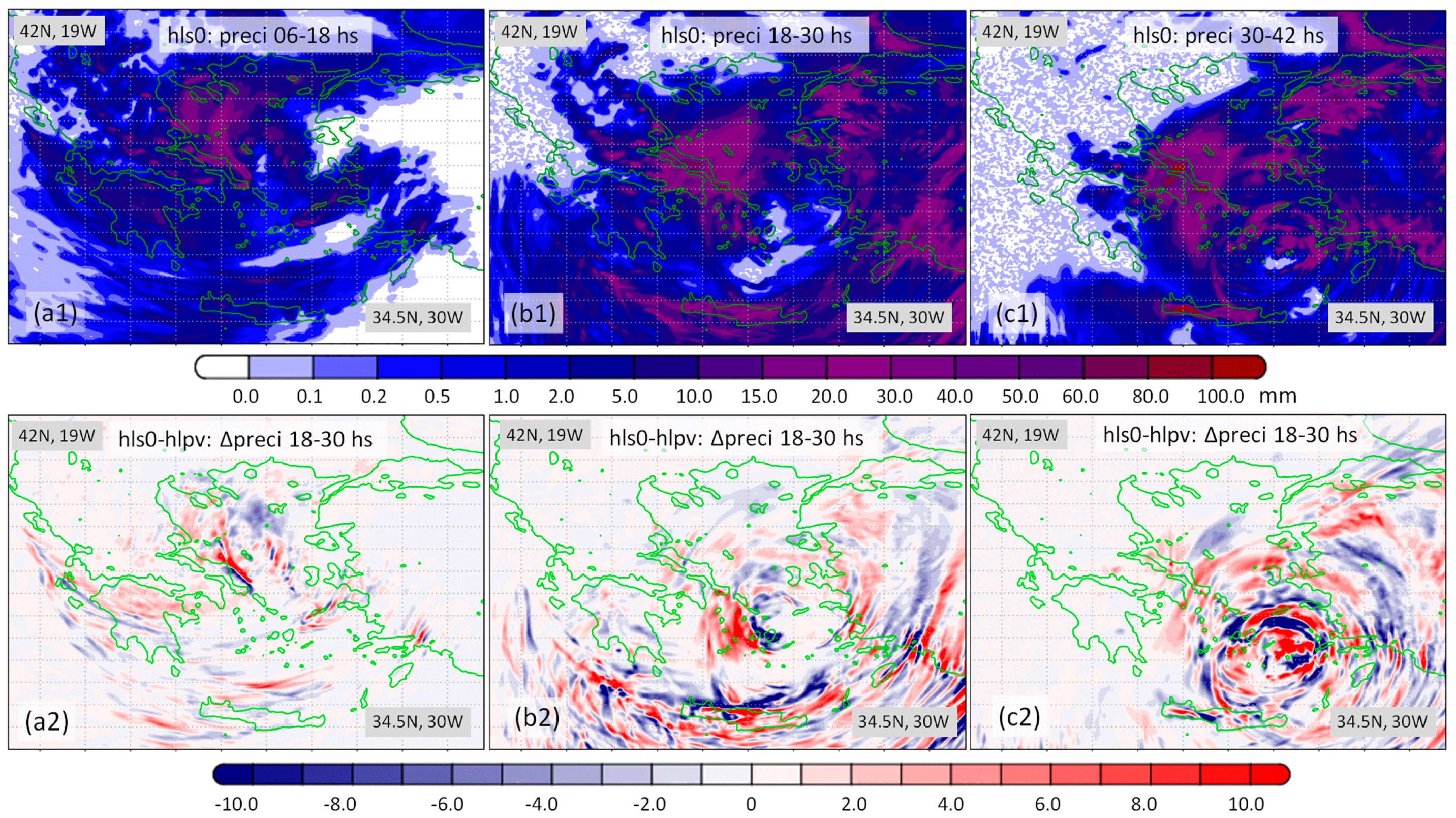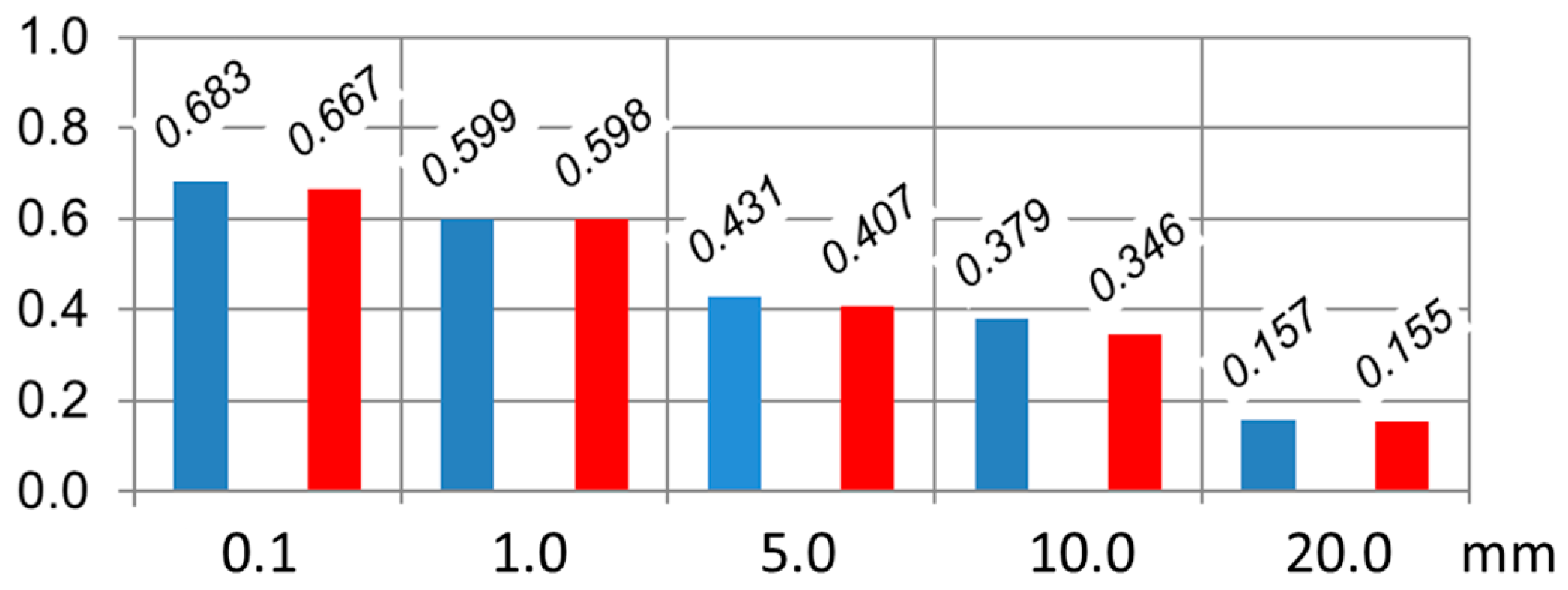The Effect of “Aeolus” Data on the Accumulated Precipitation Associated with a Severe Storm Event over Greece †
Abstract
1. Introduction
2. Data and Methodology
2.1. On the Aeolus Mission and Data
2.2. The Hephaestion Storm and COSMO Model Set Up
3. Results and Discussion
Author Contributions
Funding
Institutional Review Board Statement
Informed Consent Statement
Data Availability Statement
Acknowledgments
Conflicts of Interest
References
- Stoffelen, A.; Marseille, G.J.; Bouttier, F.; Vasiljevic, D.; de Haan, S.; Cardinali, C. ADM-Aeolus Doppler wind lidar observing system simulation experiment. Q. J. R. Meteorol. Soc. 2006, 132, 1927–1947. [Google Scholar] [CrossRef]
- Rennie, M.P.; Isaksen, L.; Weiler, F.; de Kloe, J.; Kanitz, T.; Reitebuch, O. The impact of Aeolus wind retrievals on ECMWF global weather forecasts. Q. J. R. Meteorol. Soc. 2021, 147, 3555–3586. [Google Scholar] [CrossRef]
- Rennie, M.P.; Isaksen, L. The NWP Impact of Aelus Level-2B Winds at ECMWF. Technical Memo 864. 2020. Available online: https://www.ecmwf.int/sites/default/files/elibrary/2020/19538-nwp-impact-aeolus-level-2b-winds-ecmwf.pdf (accessed on 18 June 2025).
- Steppeler, J.; Doms, G.; Schaettler, U.; Bitzer, H.W.; Gassmann, A.; Damrath, U.; Gregoric, G. Meso-gamma scale forecasts using the nonhydrostatic model LM. Meteorol. Atmos. Phys. 2003, 82, 75–96. [Google Scholar] [CrossRef]
- Available online: http://www.cosmo-model.org/content/model/cosmo/coreDocumentation/default.htm (accessed on 18 June 2025).
- Lux, O.; Wernham, D.; Bravetti, P.; McGoldrick, P.; Lecrenier, O.; Riede, W.; D’Ottavi, A.; De Sanctis, V.; Schillinger, M.; Lochard, J.; et al. High-power and frequency-stable ultraviolet laser performance in space for the wind lidar on Aeolus. Opt. Lett. 2020, 45, 1443–1446. [Google Scholar] [CrossRef] [PubMed]
- Lux, O.; Lemmerz, C.; Weiler, F.; Kanitz, T.; Wernham, D.; Rodrigues, G.; Hyslop, A.; Lecrenier, O.; McGoldrick, P.; Fabre, F.; et al. ALADIN laser frequency stability and its impact on the Aeolus wind error. Atmos. Meas. Tech. 2021, 14, 6305–6333. [Google Scholar] [CrossRef]
- Avgoustoglou, E.; Matsangouras, I.; Pytharoulis, I.; Nastos, P. Aeolus Data Validation for an Extreme Precipitation Event in Greece with the COSMO NWP Model. Water 2023, 15, 3820. [Google Scholar] [CrossRef]




Disclaimer/Publisher’s Note: The statements, opinions and data contained in all publications are solely those of the individual author(s) and contributor(s) and not of MDPI and/or the editor(s). MDPI and/or the editor(s) disclaim responsibility for any injury to people or property resulting from any ideas, methods, instructions or products referred to in the content. |
© 2025 by the authors. Licensee MDPI, Basel, Switzerland. This article is an open access article distributed under the terms and conditions of the Creative Commons Attribution (CC BY) license (https://creativecommons.org/licenses/by/4.0/).
Share and Cite
Avgoustoglou, E.; Matsangouras, I.; Pytharoulis, I.; Nastos, P. The Effect of “Aeolus” Data on the Accumulated Precipitation Associated with a Severe Storm Event over Greece. Environ. Earth Sci. Proc. 2025, 35, 7. https://doi.org/10.3390/eesp2025035007
Avgoustoglou E, Matsangouras I, Pytharoulis I, Nastos P. The Effect of “Aeolus” Data on the Accumulated Precipitation Associated with a Severe Storm Event over Greece. Environmental and Earth Sciences Proceedings. 2025; 35(1):7. https://doi.org/10.3390/eesp2025035007
Chicago/Turabian StyleAvgoustoglou, Euripides, Ioannis Matsangouras, Ioannis Pytharoulis, and Panagiotis Nastos. 2025. "The Effect of “Aeolus” Data on the Accumulated Precipitation Associated with a Severe Storm Event over Greece" Environmental and Earth Sciences Proceedings 35, no. 1: 7. https://doi.org/10.3390/eesp2025035007
APA StyleAvgoustoglou, E., Matsangouras, I., Pytharoulis, I., & Nastos, P. (2025). The Effect of “Aeolus” Data on the Accumulated Precipitation Associated with a Severe Storm Event over Greece. Environmental and Earth Sciences Proceedings, 35(1), 7. https://doi.org/10.3390/eesp2025035007








